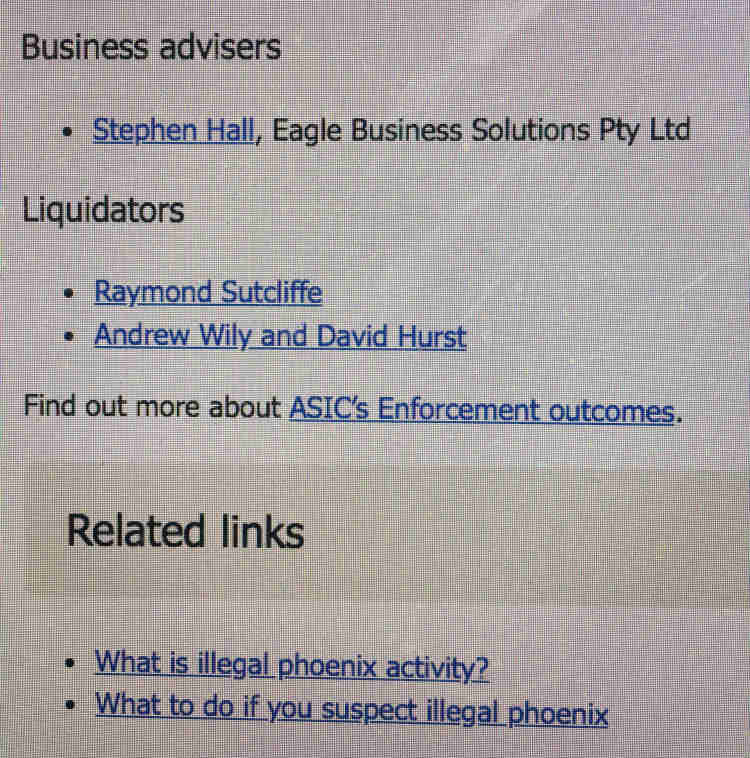
Once ASIC’s bid for an inquiry into ex-liquidator Andrew Wily and current practitioner David Hurst was dismissed with orders that the regulator also pay the respondents’ costs some among INO’s audience began to articulate the inevitable question.
Will ASIC’s costs, certain practitioners wanted to know, be built into the user pays fees it levies from the 660 odd registered liquidators availing themselves of the benefits of ASIC’s regulatory services?
Following some digging we have established that the answer to that is yes.
ASIC’s position is that an ‘industry pays’ funding model means funding of regulatory activities undertaken by ASIC is met by those creating the need for the regulation, rather than the taxpayer.
Given that ASIC sees enforcement as one of its regulatory tools, the costs of enforcement – failed or otherwise – are part of the regulatory costs that each sub-sector must pay.
According to the regulator’s reasoning, the sector as a whole benefits from having a reputation as being well-run and trustworthy and where operators are compliant with the law and poor behaviour is punished.
Of course, when a speculative foray such as that detailed in Australian Securities and Investments Commission v Wily & Hurst [2019] NSWSC 521 backfires so spectacularly, you might think ASIC, under its obligations as a model litigant would bear the cost and the responsibility for exercising poor judgment.
But no. Where ASIC is unsuccessful in a legal action, the regulator takes comfort from the fact that its costs will be covered by an appropriate increase in the annual liquidator’s levy.
And when ASIC wins, professional indemnity insurers will likely pick up most of the costs.
There is however a theoretical upside for liquidators in that where ASIC is successful in taking legal action against regulated entities and individuals and costs are awarded, those costs will be offset against enforcement costs meaning wins could lessen the levy.
In the case of the Wily Hurst litigation, INO has heard estimates that total legal fees of the parties exceed $1 million.
ASIC reasons that the whole sub-sector benefits from the clarity around the law and the legal obligations liquidators are required to meet.
That maybe so but ASIC has obligations to act as a model litigant and as responsible statutory authority.
Is it meeting those obligations, when it maintains content on its website incorrectly identifying Wily and Hurst as liquidators prosecuted for illegal phoenix activity? Please take a moment to support INO’s continued chronicling of the insolvency profession.
Further reading:
Judge Labels ASIC Vexatious As Inquiry Bid Quashed


It is little wonder that the insolvency profession is not impressed with the new funding model. Surely, this is a burden that ASIC should pay out of its not insubstantial general budget. What is ARITA’s position? Surely it will raise the matter with the relevant Minister after the election.
Paul
We will be raising these concerns with ASIC at our formal meeting next Tuesday and, yes, our continued objections to the IFM will be raised with any new minister after the election (noting our ongoing concerns have been dismissed out of hand by the current government).
I’d also point you to our latest submission against the IFM from just a couple of weeks ago.
https://www.arita.com.au/ARITA/News/Submissions/Submission__Draft_Cost_Recovery_Implementation_Statement__ASIC_industry_funding_model__2018-19_.aspx
I am heartened to learn that we are all the beneficiaries of ASIC’s “learning through losing” process. Given their historical losses we obviously have some of the most knowledgeable regulators in the world. I can’t wait for Team Thea to claim Thought Leader status.
Can ASIC be wound up if it becomes insolvent? If so, who would be appointed?
over 3 billion lost to Phoenixing each year, “estimated that the total annual detrimental cost of illegal phoenix activity on the Australian economy is approximately $3.19 billion. ” I took a look at the list of Illegal phoenix prosecutions and outcomes.Again I look at the quote over 3billion,again I look at the list, how ?
https://asic.gov.au/about-asic/what-we-do/key-activities/asic-action-on-illegal-phoenix-activity/
Let’s hope there was some proper accounting undertaken around provisioning for contingencies BEFORE the release of the 2019 industry metric…